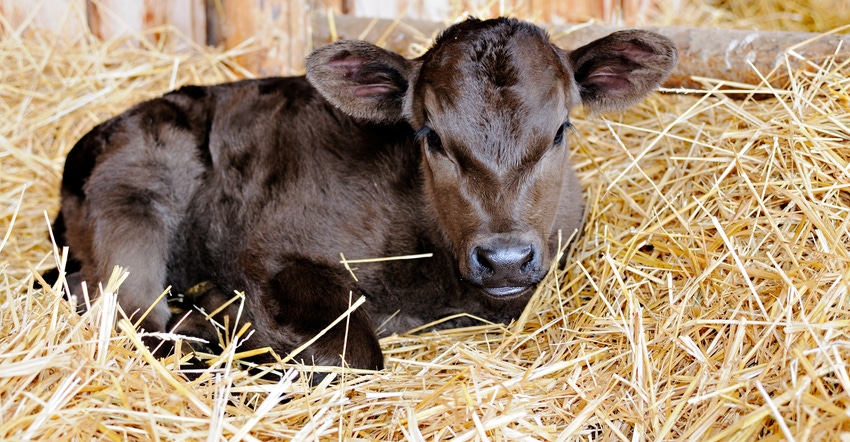Colostrum isn’t just for dairy calves
Beef Column: Colostrum is a great source of energy, vitamins, white blood cells and growth factors for all types of calves.
December 14, 2020

Typically, when I think of feeding colostrum, I think of a dairy farm. However, it is just as important to make sure newborn calves are getting adequate colostrum on a beef operation as it is on a dairy operation. Colostrum is the “first milk” produced by the dam and is high in immunoglobulins to help the calf survive disease and infection until its own immune system matures. Colostrum is also a great source of energy, vitamins, white blood cells and growth factors for the calf.
For adequate passive transfer, calves should receive 10% to 12% of their body weight in colostrum at the first feeding within the first four hours of life. After six hours, there is progressive decline in the efficiency of absorption. The passive transfer process ends 24 hours after birth. It is important to note that after a calf is born, oral stimulation starts the passive transfer clock.
Passive transfer failure
Failure of passive transfer occurs when a calf does not absorb an adequate amount of immunoglobulin from the colostrum. Prevalence of failure of passive transfer in beef calves has been reported to range from 11% to 31% in North America. While beef herds typically let Mother Nature take care of making sure calves receive adequate colostrum, you may want to consider intervening and helping calves that do not appear to be adequately nursing. Calves that experience failure of passive transfer are more likely to become sick or die in the first two months of life as compared to calves with adequate immunity.
A study conducted on beef herds in Quebec showed failure of passive transfer depended on the level of assistance the calf received in nursing. There were 221 animals in their study. Ninety-four of the calves had no assistance, 105 were led to the dam to nurse, and 22 were bottle-fed. The rate of failure of passive transfer was 22.3%, 18.1% and 4.6%, respectively. In this study, animals that were bottle-fed colostrum had the lowest percentage of failure of passive transfer; calves given no assistance or not led to the dam for feeding had the greatest chance of failure of passive transfer.
While bottle-feeding every calf may not be practical, helping those that seem to be struggling can help your bottom line. Failure of passive transfer may ultimately impair your profitability due to additional costs associated with treatment, reduced weight gain and an increased risk of calf mortality. The average total costs per beef calf with failure of passive transfer is estimated to be $95, with a range from $24 to $166.
As you prepare for calving season this year, consider ways you can enhance your colostrum feeding program. What changes can you make to your operation to ensure your calves have a good foundation? Being present at all calving times to ensure calves receive adequate colostrum soon after birth will help to minimize your farm’s rate of failure of passive transfer and set you up for success.
Schlesser is the Marathon County Extension dairy agent. This column is provided by the University of Wisconsin-Extension’s Wisconsin Beef Information Center.
You May Also Like
.png?width=300&auto=webp&quality=80&disable=upscale)


